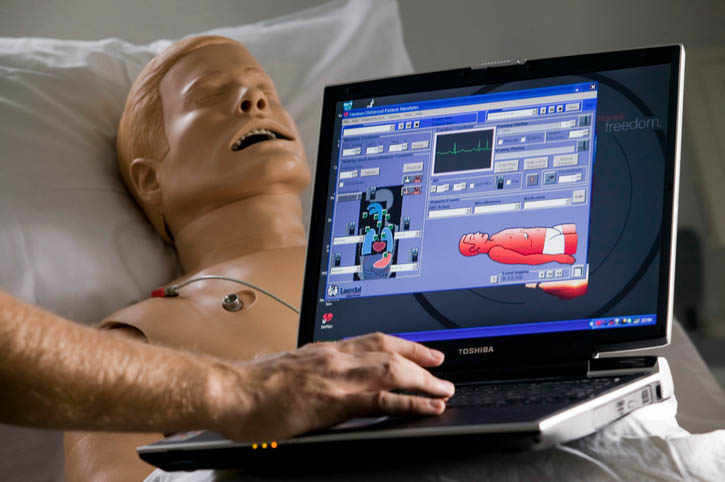Nursing education is done a little differently at Linfield College. We pride ourselves on creating innovative methods in which aspiring nurses can learn and grow into strong and competent professionals. One of the many ways in which that is done is through our simulation program. Our simulation program is run out of our experiential learning center (or ELC); it includes low, mid, and high-fidelity simulations. With these simulations, our students go in one by one to care for the patients individually for ten to fifteen minutes at a time with each student picking up where the other one left off. They plan the care together using what’s called a mega brain and prioritize the patient’s needs within the plan prior to the start of care for the patient. We have not witnessed this method being used at many facilities.
The students have the option of continuing care as the previous student or changing the plan; they are all the same nurse so if they are in the middle of a task then they are able to continue with that task without starting the steps over again, which saves time and enables them to carry out the task. In the past, we had found that having each student start over took away from the simulation experience and that the students were more focused on the task instead of the patient. This brought about the solution of one mind nursing. The students have found this to be extremely helpful and have verbalized how this increases the realism of the clinical simulation by having them think like a nurse, especially with the situation of end of shift or hand-off. In this situation the students have to consider what is the best option if they receive hand-off in the middle of a nursing task. This is one of the aspects that increases realism.
Another method of increasing realism comes from the use of alumni. We use alumni as family members during the simulation (we have a manikin or a standardized patient as an actor). During the simulation, the alumni act as though they are the family members dealing with that situation. After the simulation is complete, they help with debriefing after we walk through the case and ask high-level critical thinking questions to stimulate reflection, retention, and transference. They tie in clinical examples of how it relates to their clinical practice and emphasize why the clinical reasoning and actions based on clinical judgement are so important. The students enjoy having the alumni because they have shared their experience and have gone through what they have experienced and have become successful after it. The alumni serve as additional mentors and role models in this way, offering advice and further insight into the role of nurses. With this addition to our clinical simulation program, we have created a more realistic and enjoyable experience for our students.
- The Sim Brain Phenomenon - December 11, 2019
- Let Me Tell You a Story: Teaching and Learning through Narrative Pedagogy - February 27, 2019
- Increasing Realism in Clinical Simulation - January 23, 2018



